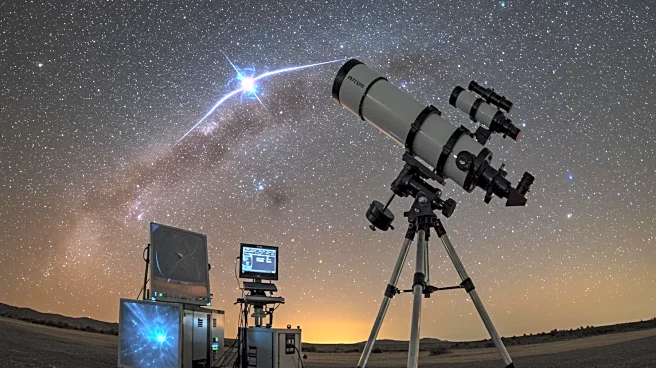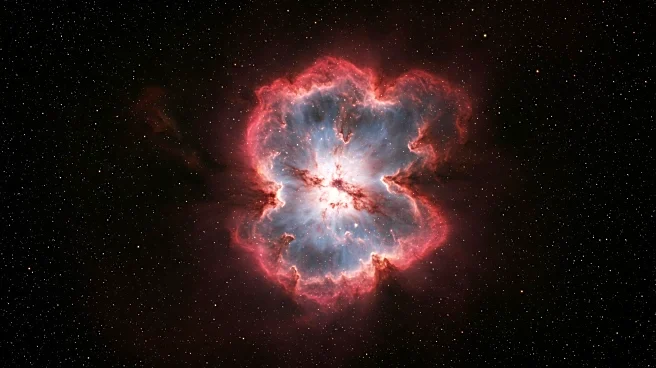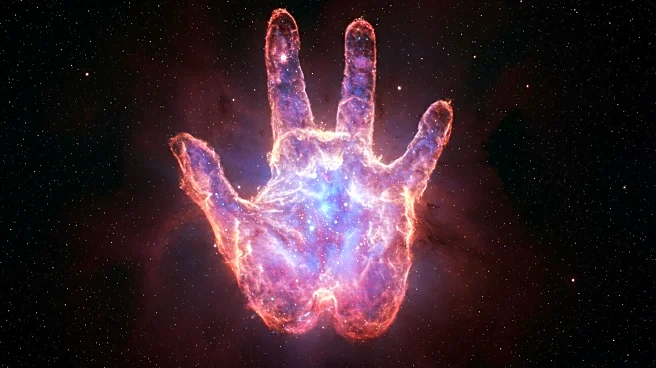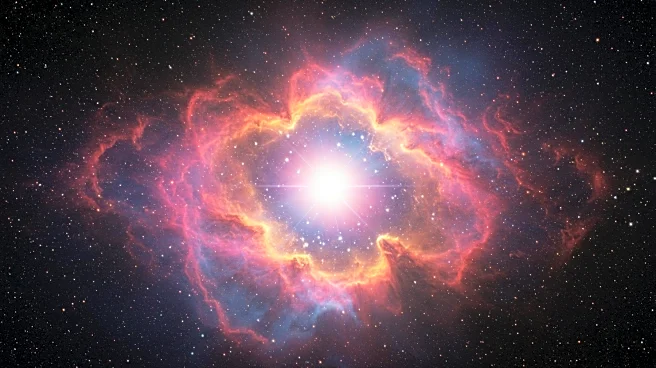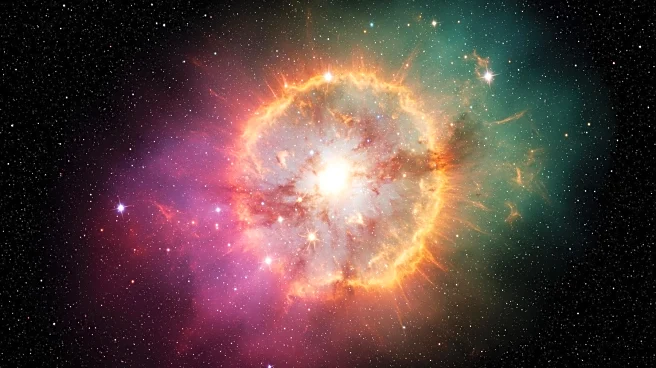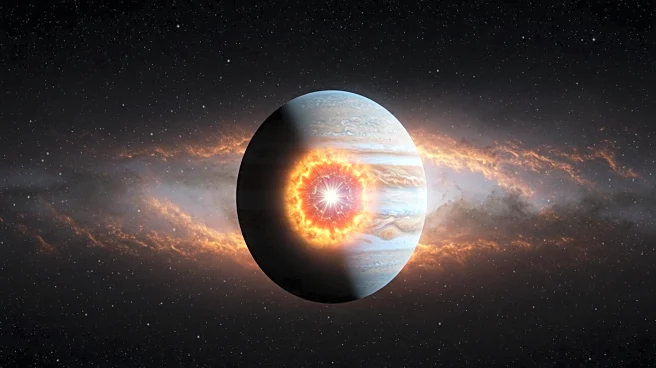Rapid Read • 8 min read
NASA's Chandra X-ray Observatory has captured a striking image of a nebula shaped like a human hand, formed from the remnants of a supernova explosion. The nebula, known as MSH 15-52, is powered by pulsar B1509-58, a rapidly spinning neutron star. This cosmic structure spans over 150 light-years and is the result of a massive star's collapse and subsequent explosion. The composite image combines radio data from the Australia Telescope Compact Array with X-ray data from Chandra, revealing the nebula in vibrant colors. The pulsar at the center acts as a cosmic dynamo, accelerating particles and driving winds that shape the nebula's hand-like form.
AD
The discovery of the hand-shaped nebula provides valuable insights into the interactions between pulsars and supernova debris. Understanding these cosmic phenomena can enhance knowledge of stellar evolution and the dynamics of neutron stars. The nebula's unique features, such as the alignment of delicate filaments with magnetic fields, offer clues about the processes that occur when pulsar winds collide with stellar remnants. This research contributes to the broader field of astrophysics by shedding light on the mechanisms that sculpt such intricate cosmic structures.
Further research is needed to unravel the mysteries surrounding MSH 15-52 and RCW 89. Astronomers aim to explore the interactions between pulsars and supernova remnants to better understand the formation and evolution of these structures. The unexpected findings, such as the absence of radio signals in certain X-ray features, suggest complex processes at play. Continued observations and analysis will help clarify the role of magnetic fields and energetic particles in shaping nebulae, potentially leading to new discoveries in the field of astrophysics.
The hand-shaped nebula highlights the intricate and often unexpected beauty of cosmic phenomena. It serves as a reminder of the vastness and complexity of the universe, where stellar explosions can create structures that resemble familiar shapes. This discovery also underscores the importance of advanced observational technologies, like the Chandra X-ray Observatory, in unveiling the hidden wonders of the cosmos.
AD
More Stories You Might Enjoy




